CHAKalaka: A Taste of Johannesburg’s Heritage
Chakalaka is a typical South African dish full of flavor, traditionally served as a side but often enjoyed as a standalone vegetarian meal. Made with a mix of beans, tomatoes, onions, and peppers, it’s a spicy, comforting dish that perfectly captures South Africa’s love for hearty flavors. Popular at braais (South African barbecues), Chakalaka is also a staple for vegetarians, offering a healthy, flavorful, and filling option. Whether paired with pap (my favorite!) or enjoyed on its own, Chakalaka is a must-try for anyone looking to experience the taste of South African cuisine!
CHAKALAKA – CULINARY ROOTS
Chakalaka originates from the townships of Johannesburg, where it was first made by migrant workers in the gold mines. The dish is believed to have been created by laborers who would combine whatever vegetables and spices they had available to add flavor to their basic meals. Over time, it has become a staple in South African homes, particularly at braais and celebrations.
The traditional dish typically consists of a mix of tomatoes, onions, peppers, carrots, beans, and spices like curry powder, garlic, and chili. Accordingly, it’s versatile and can be made in various ways. One of the best things about chakalaka is that it’s vegetarian, making it a great option for those looking for a plant-based dish. For example, you can include baked beans for added protein and richness.
In South African culture, chakalaka is more than just a meal—it’s a symbol of creativity and resourcefulness. It showcases how people made something delicious and nutritious from humble, everyday ingredients. Today, it’s served alongside pap, grilled meats, or even on its own as a main dish, embodying the diversity and vibrant culinary traditions of the country.
CHAKALAKA – INGREDIENTS
Chakalaka is a flexible dish with a variety of vegetables that can be included depending on availability and personal preference. Here’s a breakdown of common vegetables used:
- Tomatoes: Provide a tangy flavor and help create the sauce.
- Bell peppers: Add crunch, color, and a mild sweetness.
- Carrots: Offer sweetness and a vibrant orange color.
- Cabbage: Adds texture and a slight bitterness.
- Green beans or baked beans (optional): Make the dish heartier and more filling.
- Cauliflower (optional): Add bulk and soak up the spices well.
Aromatics are essential for building the flavor profile of chakalaka. They are a must-have when cooking your chakalaka:
- Onions: Form the base of the dish, adding sweetness and depth.
- Garlic: Adds a sharp, savory depth to the dish.
- Ginger: Provides warmth and a slight spiciness.
- Chilies: Introduce heat, though the amount can be adjusted.
- Curry powder: A key spice mix that brings complexity and heat.
- Black pepper: Adds sharpness and enhances the overall flavor.
- Bay leaves: Infuse a subtle earthy and herbal note.
- Coriander (ground): Adds a citrusy, slightly sweet flavor.
- Paprika: Enhances the smokiness and contributes to the rich color.
- Thyme: Offers an earthy, slightly minty undertone.
- Chili flakes or powder: Elevates the heat, depending on your spice preference.
CHAKALAKA – RECIPE
INGREDIENTS
- 3 garlic cloves, minced
- 1 piece of ginger (minced)
- 2 green chillies (finely chopped)
- 1 tbsp curry powder
- 1 tsp paprika
- 1 tsp cumin
- 1 tsp ground coriander
- 1/2 tsp chili flakes (optional)
- Salt and black pepper to taste
- 2 medium onions (finely chopped)
- 1 red bell pepper (chopped)
- 1 green bell pepper (chopped)
- 2 carrots (grated)
- 2-3 tomatoes.(chopped)
- 1 can of baked beans
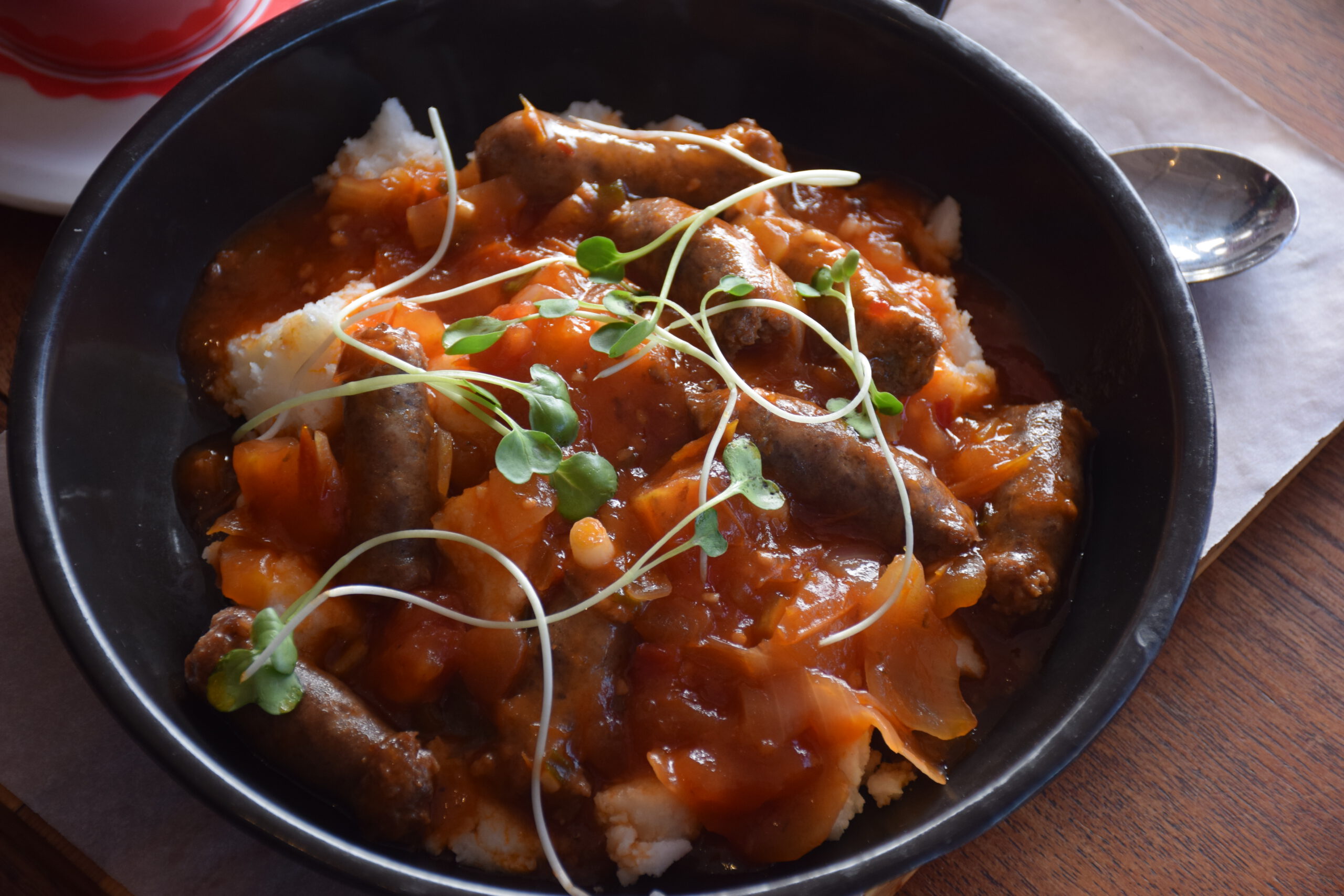
Personal ranking
Chakalaka reminded me of an south african version of Chili sin Carne. It’s a nice dish full of flavors, but nothing really extraordinary.
1. Heat the oil
In a large pan, heat vegetable oil over medium heat.
2. Saute the aromatics
Add the chopped onions, garlic, ginger, and chilies to the pan. Cook for 3-5 minutes until the onions are soft and translucent.
3. ADD the spices
Stir in the curry powder, paprika, cumin, ground coriander, and chili flakes. Toast the spices for about 1 minute to release their flavors.
4. COOK the vegetables
Add the bell peppers, grated carrots, and tomatoes to the pan. Cook for 5-7 minutes, stirring occasionally, until the vegetables soften.
5. ADD baked beans (optional)
If using baked beans, stir them in at this point along with the water. Allow everything to simmer for another 10 minutes, stirring occasionally. Add more water if necessary to achieve your desired consistency.
6. season
Taste the chakalaka and adjust seasoning with salt, pepper, or more spices as needed.
7. Serve & ENjoy
Chakalaka is best served warm and can be enjoyed as a side dish with grilled meats, pap, or on its own as a vegetarian meal.
CHAKALAKA – VARIATIONS
Chakalaka is a wonderfully adaptable dish, with variations that reflect personal tastes and regional influences across South Africa. One popular variation incorporates baked beans, which add heartiness and protein, making it an excellent option for vegetarians. In some areas, you might encounter chakalaka with chickpeas or kidney beans, enhancing its nutritional profile and providing different textures. Moreover, coastal regions often introduce seafood into the mix, with prawns or fish lending a unique coastal twist to the dish.
For those who enjoy a bit of heat, it’s common to see additional chilies or even peri-peri sauce included. However, milder adaptations focus on sweeter vegetables like butternut squash or bell peppers to create a more subdued flavor profile. In certain recipes, chefs might also add a splash of vinegar or lemon juice for a tangy kick, balancing the dish’s richness.
Additionally, fresh herbs such as cilantro or parsley are sometimes used as a finishing touch, adding a burst of freshness that complements the dish’s robust flavors. Some cooks even experiment with adding a bit of fruit, like mango or pineapple, for a sweet contrast to the spicy undertones. With so many variations, chakalaka can be tailored to suit any palate, making it a beloved staple in South African cuisine.

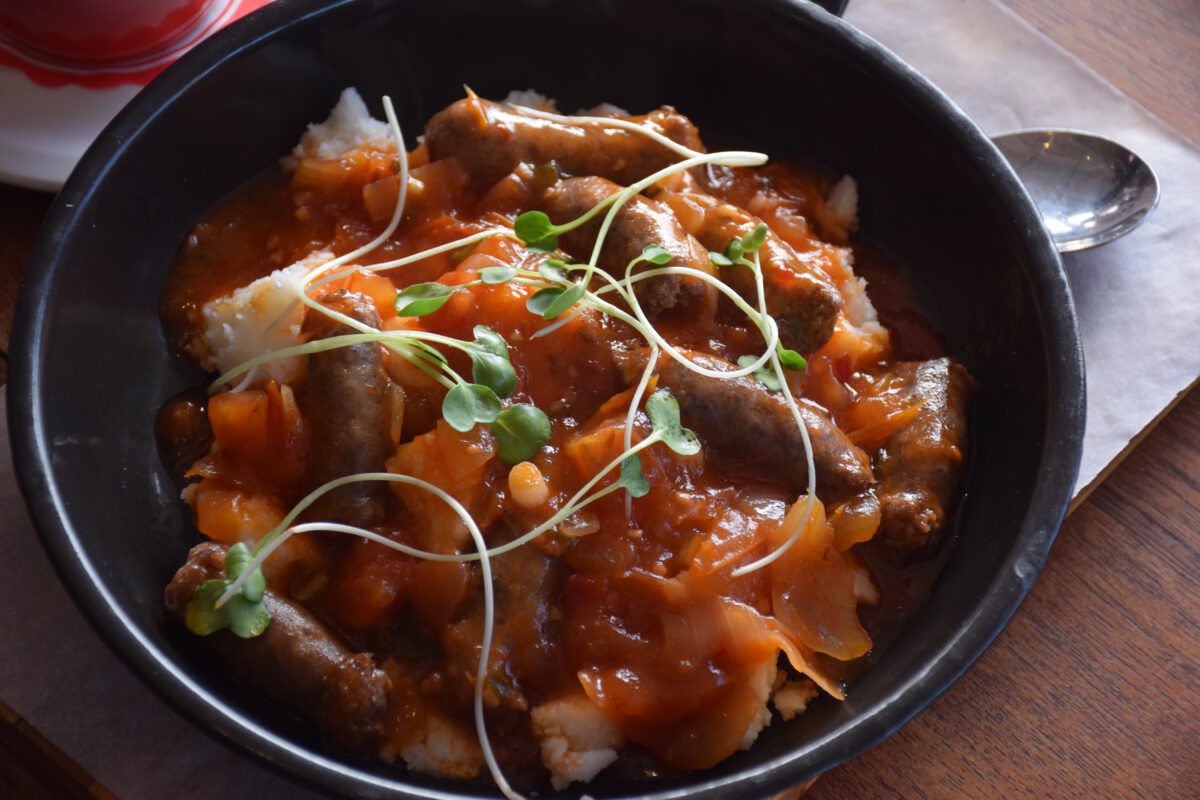
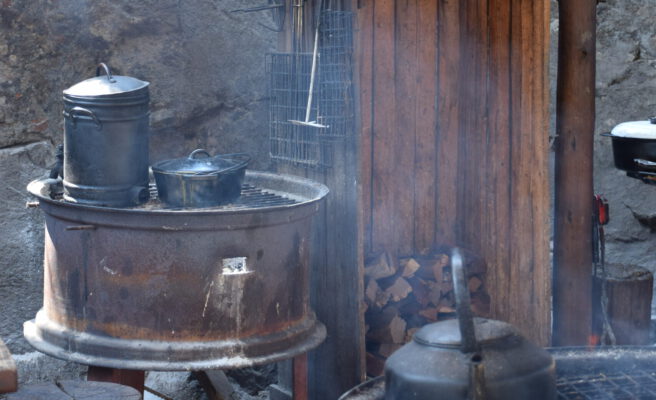

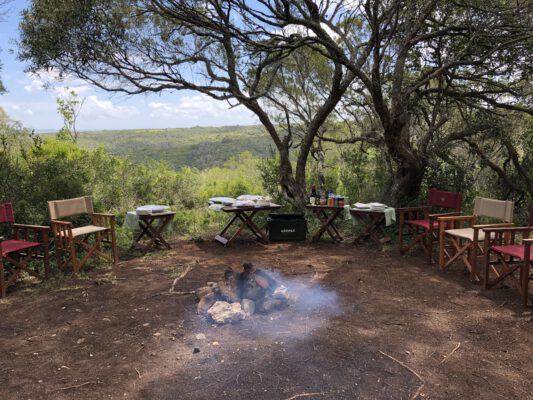
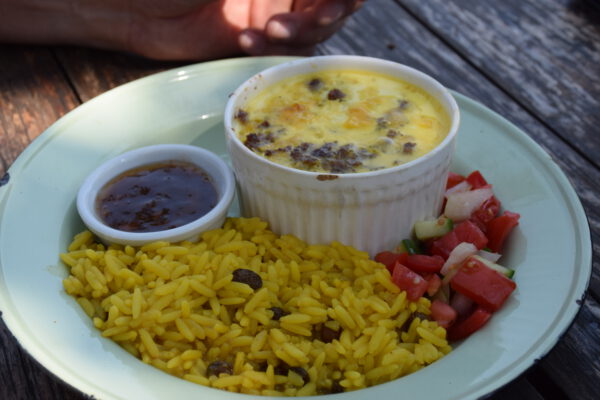
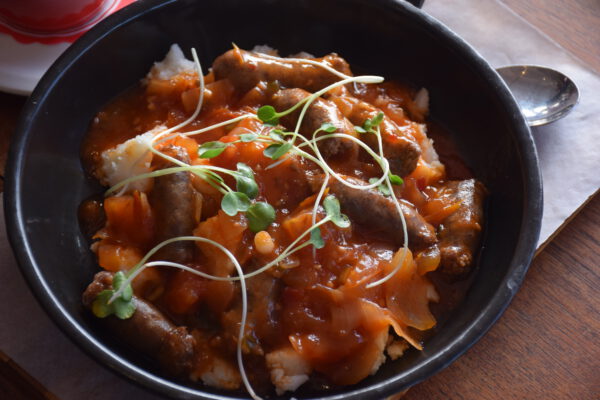
Pingback: Pap Recipe - sweet Destinations